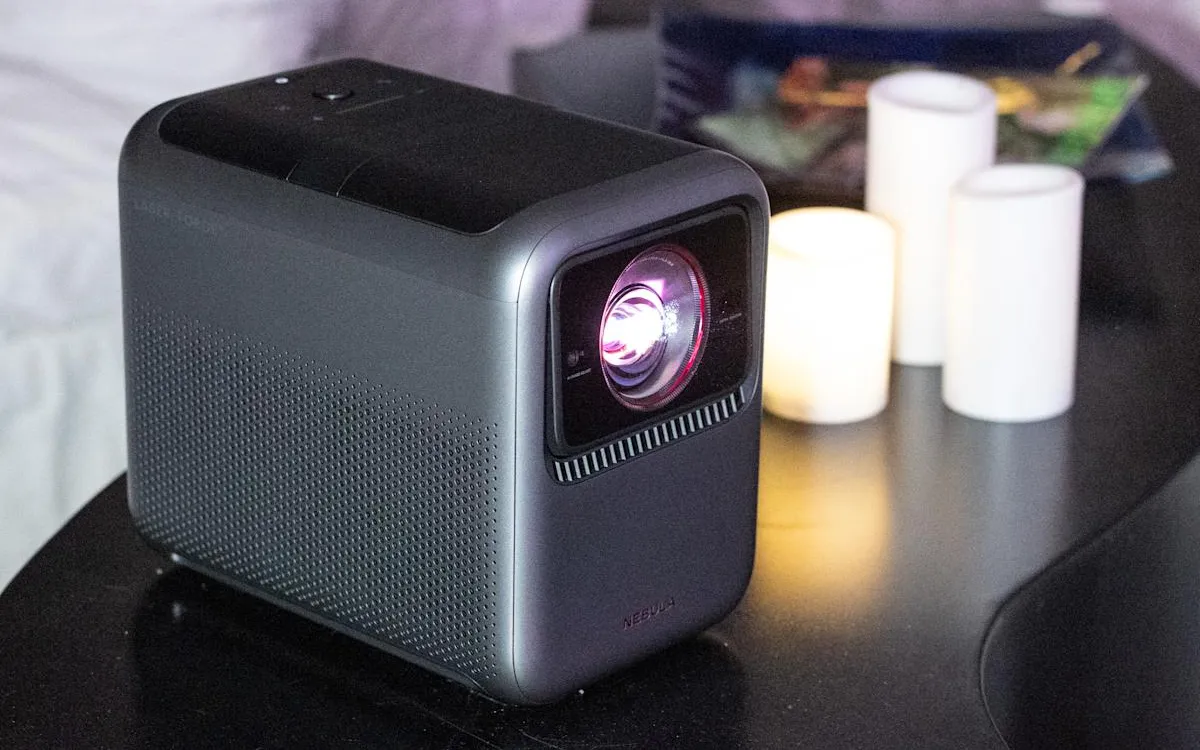
Finding the perfect projector can be a challenge, especially when you want a device that delivers the brightest and sharpest image while remaining portable and easy to set up, particularly outdoors. Anker's Nebula X1 long-throw projector claims to fulfill all these criteria, featuring a cutting-edge three-laser engine that produces an impressive 3,500 ANSI lumens at 4K resolution. This projector also introduces groundbreaking features, such as liquid cooling to minimize fan noise and a motorized lens gimbal that automates the setup process.
However, the Nebula X1 comes with a hefty price tag of $3,000, or $3,298 if you opt for the satellite speakers during a limited-time offer. This pricing places it among the more expensive consumer projectors, competing with models like Epson's LS11000 and the Valerion VisionMaster Pro2. After extensive testing, I can confidently state that the Nebula X1 offers the most vivid image quality I’ve encountered, along with a user-friendly setup. Yet, the high cost may deter most potential buyers seeking a portable projector.
The Nebula X1 adopts a tall rectangular design reminiscent of Anker's previous models, such as the original Nebula and Cosmos. One of its standout features is a retractable handle that enhances portability. However, this design means that when ceiling-mounted, the Nebula X1 hangs lower than most indoor projectors. To simplify setup, Anker cleverly integrated a lens mechanism on a gimbal capable of tilting up to 25 degrees. Coupled with a 1.67x zoom, autofocus, keystone correction, and ambient light detection, the projector automates the setup process seamlessly.
To set up the projector, simply select a wall or screen location and position it between 8 and 35 feet away, depending on the size of your display. Centering the projector is crucial to avoid any digital keystone correction that could compromise image quality. Once in place, the projector utilizes its Spatial Adaptation feature to scan the surrounding area, adjust the lens, and project the final image with remarkable accuracy. While minor obstacles may interfere with this automated process, it worked effectively for me on both walls and dedicated screens.
One of the most noteworthy innovations in the Nebula X1 is its liquid cooling system, which significantly reduces fan noise to a mere 26dB whisper. This advancement allows the projector to maintain a smaller footprint, enhancing its usability compared to many competitors. In terms of connectivity, the X1 is equipped with two HDMI 2.1 ports, one featuring Enhanced Audio Return Channel (eARC) functionality. This standard supports fast refresh rates of up to 240Hz at 4K, although the X1 limits itself to 4K at 60Hz, making it less ideal for gaming.
The projector also includes USB Type-A and USB Type-C ports, as well as a S/PDIF optical audio port. With Google TV built-in, users gain access to a vast library of apps via Google Play, including Netflix's official application that supports 4K Dolby Vision without a separate streaming device. The interface is familiar and user-friendly, although it can be sluggish at times, particularly when adjusting projector image settings.
Anker touts its use of "cinema-grade glass" in the Nebula's 14-element lens, which enhances brightness, color accuracy, and lens durability. The 4K triple laser engine boasts a rating of up to 3,500 ANSI lumens with a 5,000:1 contrast ratio. Additionally, it achieves remarkable color accuracy with a Delta E value under 0.8 and covers an impressive 110 percent of the Rec.2020 color spectrum, rivaling high-end ultra short throw (UST) projectors from renowned brands like Samsung, LG, and Formovie.
The result is unparalleled image clarity and brightness, making it suitable for viewing even in well-lit environments. The projector's Conference mode can further boost brightness for viewing in brighter settings, although it may introduce a slight blue color cast. Whether used in a dimly lit room or outdoors at night, the Nebula X1 consistently delivers the best image quality I have experienced among projectors in its price range.
In addition to its visual capabilities, Anker has prioritized audio quality in the Nebula X1. The projector features four built-in speakers with a total output of 40 watts, benefiting from the reduced fan noise. While the sound quality is generally solid, with good high-end and bass response, the clarity of dialogue stands out. For those seeking an enhanced audio experience, optional Nebula-branded satellite speakers can be easily connected via Wi-Fi. Each speaker boasts 40-watt front drivers, along with additional upward-firing and side-firing drivers, creating a surround sound effect.
When paired with the projector, these satellite speakers generate an impressive 200 watts of sound with Dolby Audio support, though they do not include Dolby Atmos capabilities. Battery-powered for up to eight hours, they are particularly convenient for outdoor use, although users must remember to keep them charged. In my testing, the satellite speakers proved effective in delivering crisp, balanced sound across various movie genres, ensuring a satisfying auditory experience.
The Nebula X1 presents a unique proposition as a portable outdoor projector, yet it also excels as an indoor unit. With its exceptionally sharp, high-contrast, and color-accurate image, video quality is beyond reproach. The easy setup and compact design make it an excellent choice for those who appreciate versatility in their projector. While it stands out among the competition, particularly against the Valerion VisionMaster Pro2, the $3,000 price point may be a barrier for many potential buyers.
This projector is ideal for those looking for a high-end long-throw projector or a UST alternative who desire flexibility. Whether used as a standalone indoor projector or mounted on a ceiling, the Nebula X1 offers unmatched versatility. If budget is not a constraint, this projector is undoubtedly a fantastic investment.